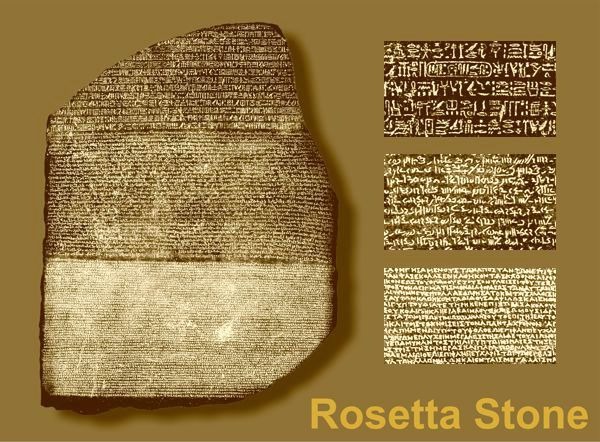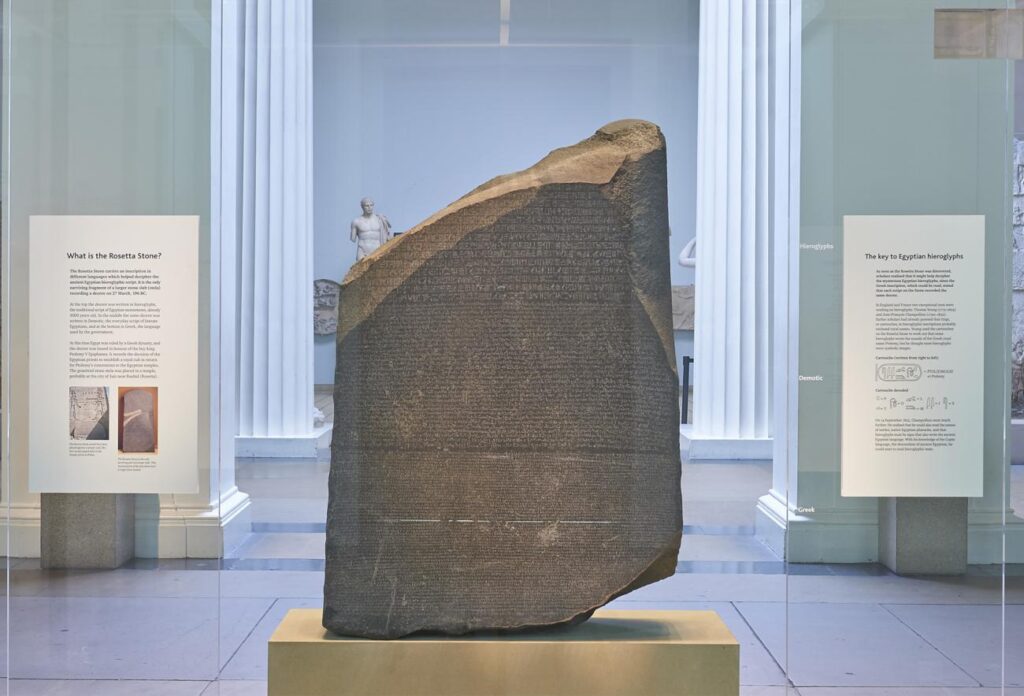
Introduction
The Rosetta Stone is an ancient artifact that captivated the world with its enigmatic inscriptions and played a pivotal role in deciphering the secrets of ancient Egyptian hieroglyphs. Discovered in 1799 by a French soldier during Napoleon Bonaparte’s Egyptian campaign, this remarkable slab of black granite continues to intrigue scholars, historians, and language enthusiasts to this day. This article delves into the fascinating history, significance, and decipherment of the Rosetta Stone.
Unearthing the Rosetta Stone
The Rosetta Stone was discovered in the town of Rosetta (modern-day Rashid) in the Nile Delta region of Egypt. While constructing a fort, French soldier Pierre-François Bouchard unearthed a slab of granite measuring approximately four feet by two-and-a-half feet. Little did he know that this discovery would revolutionize our understanding of ancient Egyptian culture and language.
The Inscriptions:
The Rosetta Stone is inscribed with three parallel texts: hieroglyphic, demotic, and Greek. The hieroglyphic script, used for monumental and religious purposes, had been a mystery since the fall of ancient Egypt. The demotic script was a simplified version of hieroglyphics used for everyday writing, while Greek was the language of the ruling class during the Ptolemaic period
The Quest for Decipherment
The hieroglyphic script had remained undeciphered for over a millennium, presenting an insurmountable challenge to scholars. The Rosetta Stone provided a breakthrough, as it contained the same text in both hieroglyphics and Greek, allowing researchers to compare the two and make educated guesses about the meaning of hieroglyphic signs
The Key Players
Among the key figures in deciphering the Rosetta Stone was Jean-François Champollion, a French scholar renowned for his expertise in ancient languages. Through extensive analysis, comparison, and a deep understanding of ancient Egyptian grammar, Champollion successfully cracked the hieroglyphic code in 1822, forever unlocking the secrets of this ancient script
The Legacy
The decipherment of the Rosetta Stone transformed Egyptology, enabling researchers to understand the rich history, culture, and religion of ancient Egypt. It opened doors to an array of new discoveries, including the translation of other ancient Egyptian texts and the ability to read inscriptions on monuments, papyri, and tombs
Preservation and Exhibition

The Rosetta Stone, now housed in the British Museum in London, is one of its most treasured artifacts. Protected and displayed for millions of visitors each year, it serves as a reminder of the power of human curiosity and the relentless pursuit of knowledge
Controversy and Repatriation
The ownership and display of the Rosetta Stone have sparked debates about cultural heritage and repatriation. Egypt, along with several other nations, has requested the return of such artifacts to their country of origin, emphasizing their historical and cultural significance
Conclusion
The Rosetta Stone stands as an enduring testament to the triumph of human intellect and determination. Through its discovery and decipherment, it has provided invaluable insights into the ancient world, shedding light on a civilization that had been shrouded in mystery for centuries. As a tangible link to our past, the Rosetta Stone continues to inspire awe, curiosity, and a deeper appreciation for the power of language and cultural heritage






